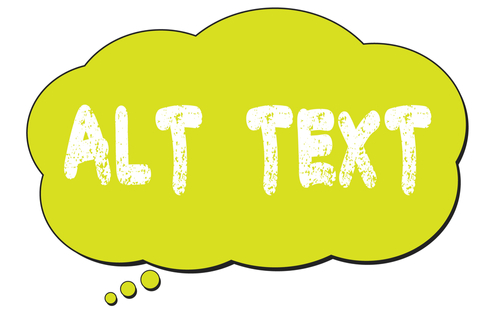Enhance Your Online Presence Through Thoughtful Image Alt Text
Every detail on a webpage is important in determining its visibility on search engine results pages. One often overlooked yet essential element is the image alt text. Far more than a description, image alt text serves as a component in optimizing a website for search engines. At Now Media Group, we understand how this seemingly small detail can significantly impact a site’s overall SEO strategy.
To learn more about the impact of image alt text, contact our team by calling (858) 333-8950.
What Is Alt Text?
Alt text, short for alternative text, is a descriptive text associated with an image on a webpage. Alt text is important in providing information about the content of the image for users who may not be able to see it, such as those with visual impairments or users with slow internet connections. Alt text is also utilized by search engines to understand and index the content of images, contributing to the overall SEO of a webpage.
The Importance of Image Alt Text
While alt text primarily serves as an accessibility feature for individuals with visual impairments, its impact on SEO is substantial. Search engines, such as Google, rely on various signals to comprehend the content of a webpage, and images are no exception. Including well-crafted alt text allows search engines to index images accurately, enhancing the overall credibility of the webpage. This contributes to higher search engine rankings and increased visibility.
Beyond SEO, image alt text aids in creating a more inclusive online environment. It ensures individuals using screen readers can understand the content of an image, making the web accessible to a broader audience. As search engines prioritize user experience, websites that prioritize accessibility are likely to be favored in search rankings.
How to Implement Alt Text Effectively
Be Descriptive
When it comes to adding alt text, be as descriptive as possible:
- Provide a clear and concise description of the image, such as what and where the image is set.
- Include relevant details that convey the image’s content accurately, such as the emotions on a person’s face or an action they’re performing.
Use Keywords
Keywords are very helpful in your alt text:
- Integrate relevant keywords related to the image and your overall content.
- Ensure that the keywords align with the context of the image and your webpage. Don’t use words that have nothing to do with your content or the image in question.
Keep it Concise
Succinct descriptions are best:
- Aim for a brief alt text that conveys the essential information.
- Avoid excessive length, as screen readers may struggle with lengthy descriptions.
Avoid Keyword Stuffing
Don’t overload your image alt text with unnecessary words:
- While using keywords is crucial, avoid overloading the alt text with too many keywords, as it can become convoluted and unnecessary.
- Maintain a natural flow to make it user-friendly and aligned with accessibility principles.
Context Matters
Without context, there may be a hundred different ways to interpret the image:
- Consider the context of the image within the overall content.
- Ensure the alt text contributes to the narrative and provides meaningful context.
Don’t Repeat Content
Don’t duplicate the same content in your image alt text:
- If the image is already described in the surrounding text, there’s no need to duplicate that information in the alt text.
- Alt text should complement, not duplicate, other content.
Accessibility First
The first and foremost goal of image alt text is accessibility:
- Prioritize accessibility by thinking about how the alt text can convey the message to someone who cannot see the image.
- Imagine describing the image to someone over the phone; what details would you include?
Testing
You can play around with different ways to create alt text:
- Regularly test your website’s accessibility using screen readers or browser extensions.
- Ensure that alt text is properly implemented and provides a meaningful experience for users with visual impairments.
Dynamic Content
- For dynamically generated content or interactive elements, such as charts or graphs, ensure that the alt text updates to reflect changes accurately.
Review and Update
Make updates as needed:
- Periodically review and update alt text, especially when content or images change on your website.
- Stay current with industry best practices and adjust your approach accordingly.
Elevate SEO and Foster Inclusivity
Image alt text stands out as a seemingly modest yet impactful factor. By recognizing its significance, website owners can not only boost their search engine rankings but also contribute to a more inclusive online experience. Our SEO professionals at Now Media Group understand that a few well-chosen words can make a significant difference in how your website is perceived by both search engines and visitors alike.
Contact Now Media Group by calling (858) 333-8950 to learn more about this simple step. We’re eagerly looking forward to taking your website to the next level.
